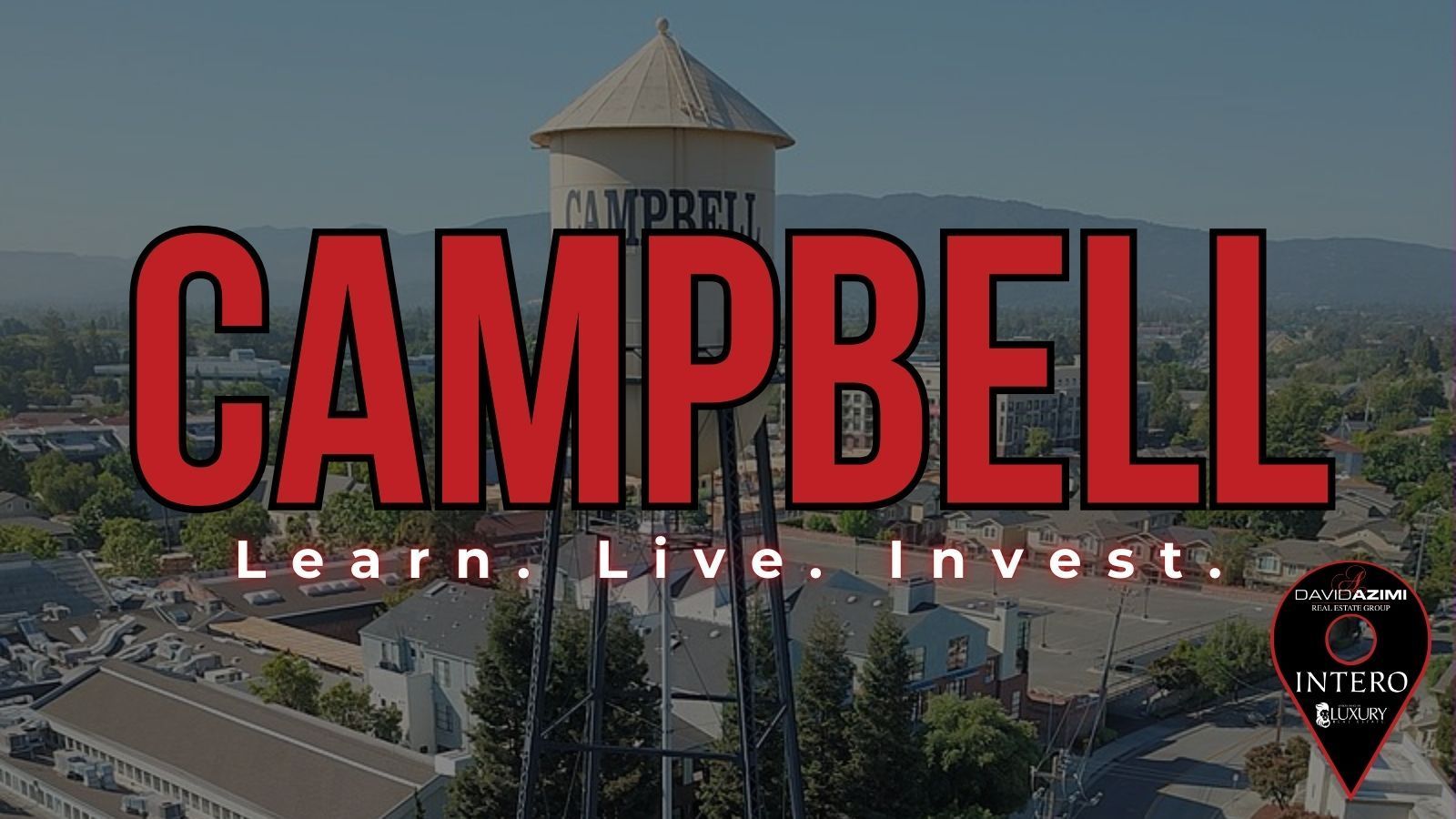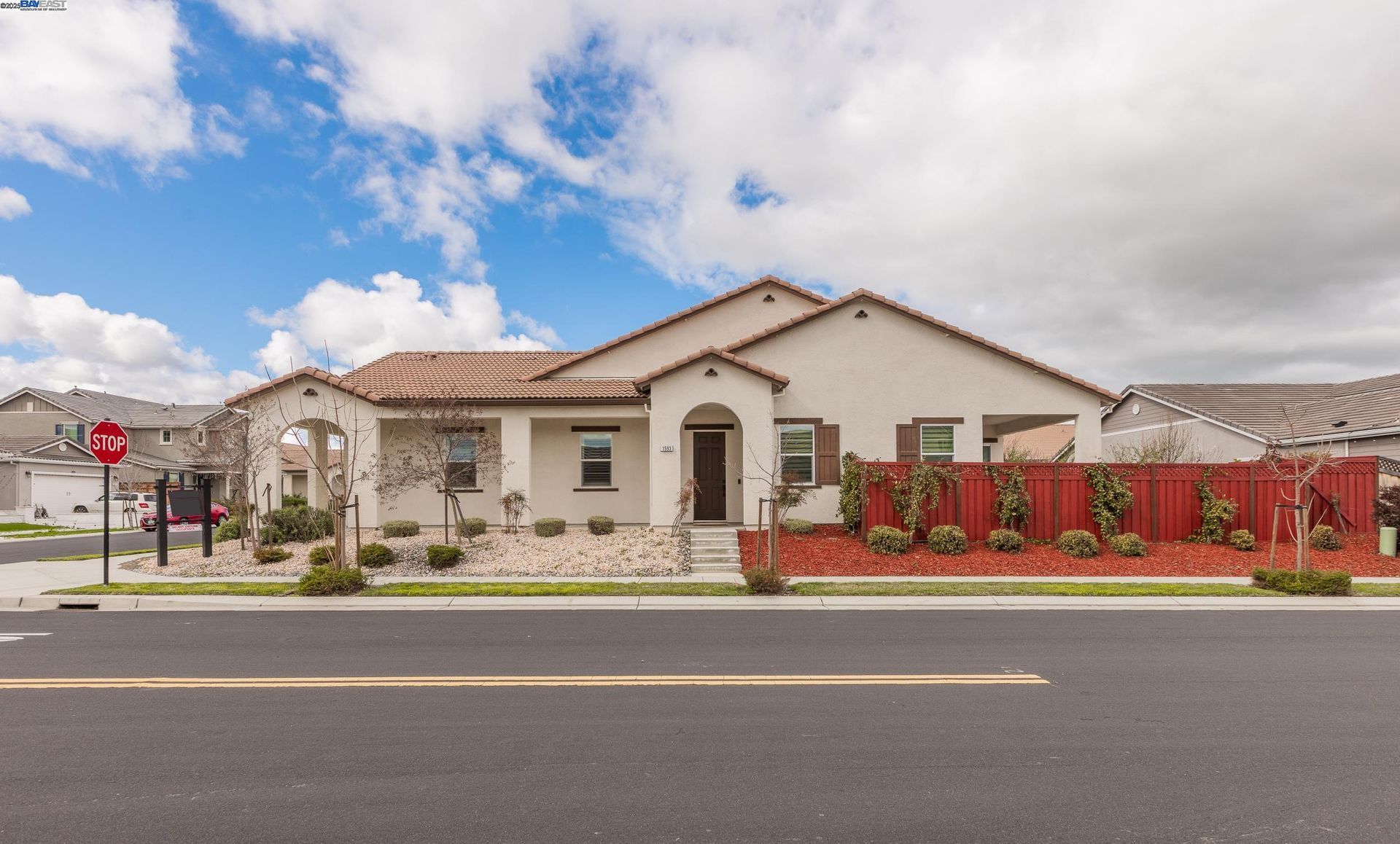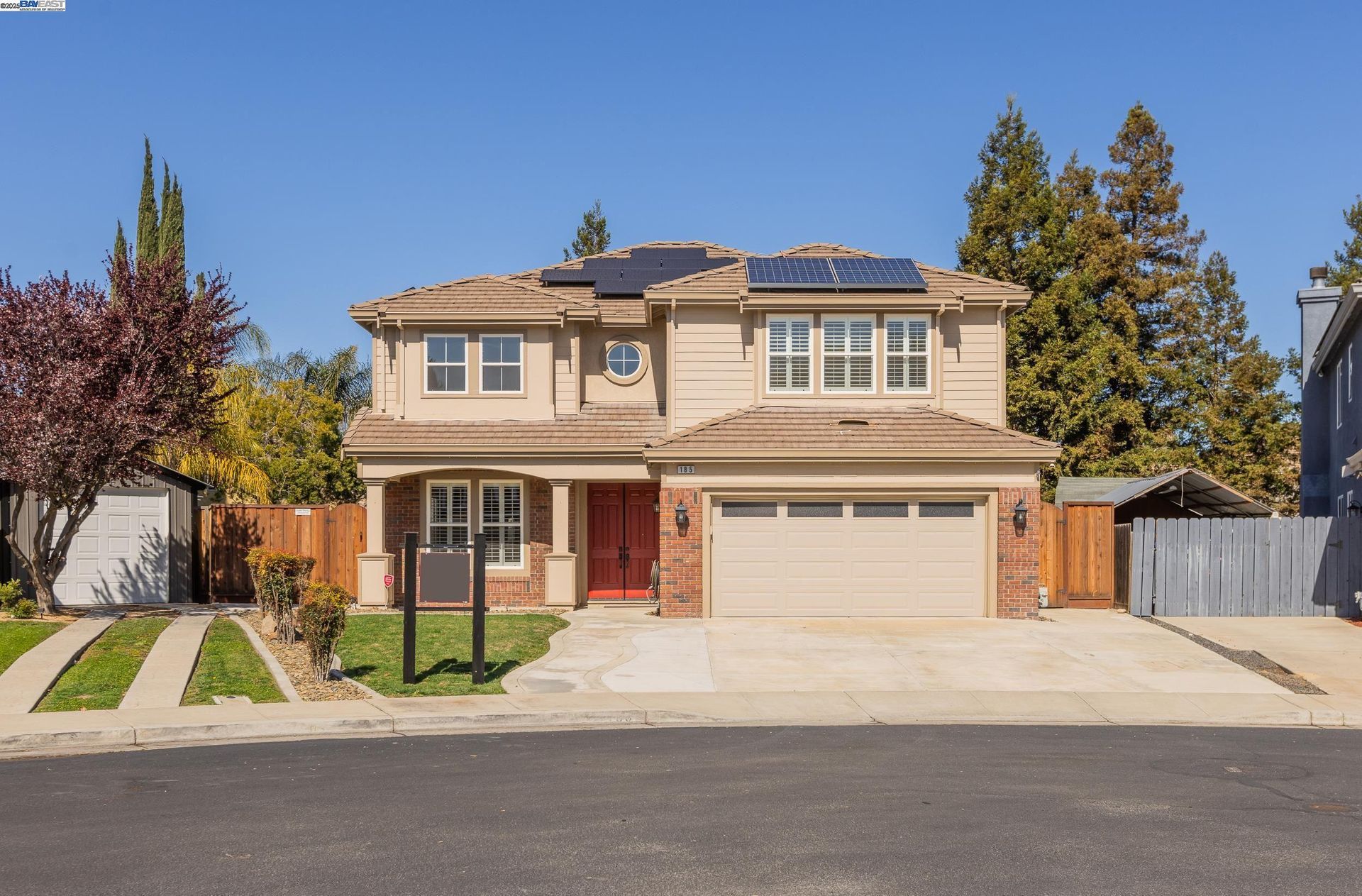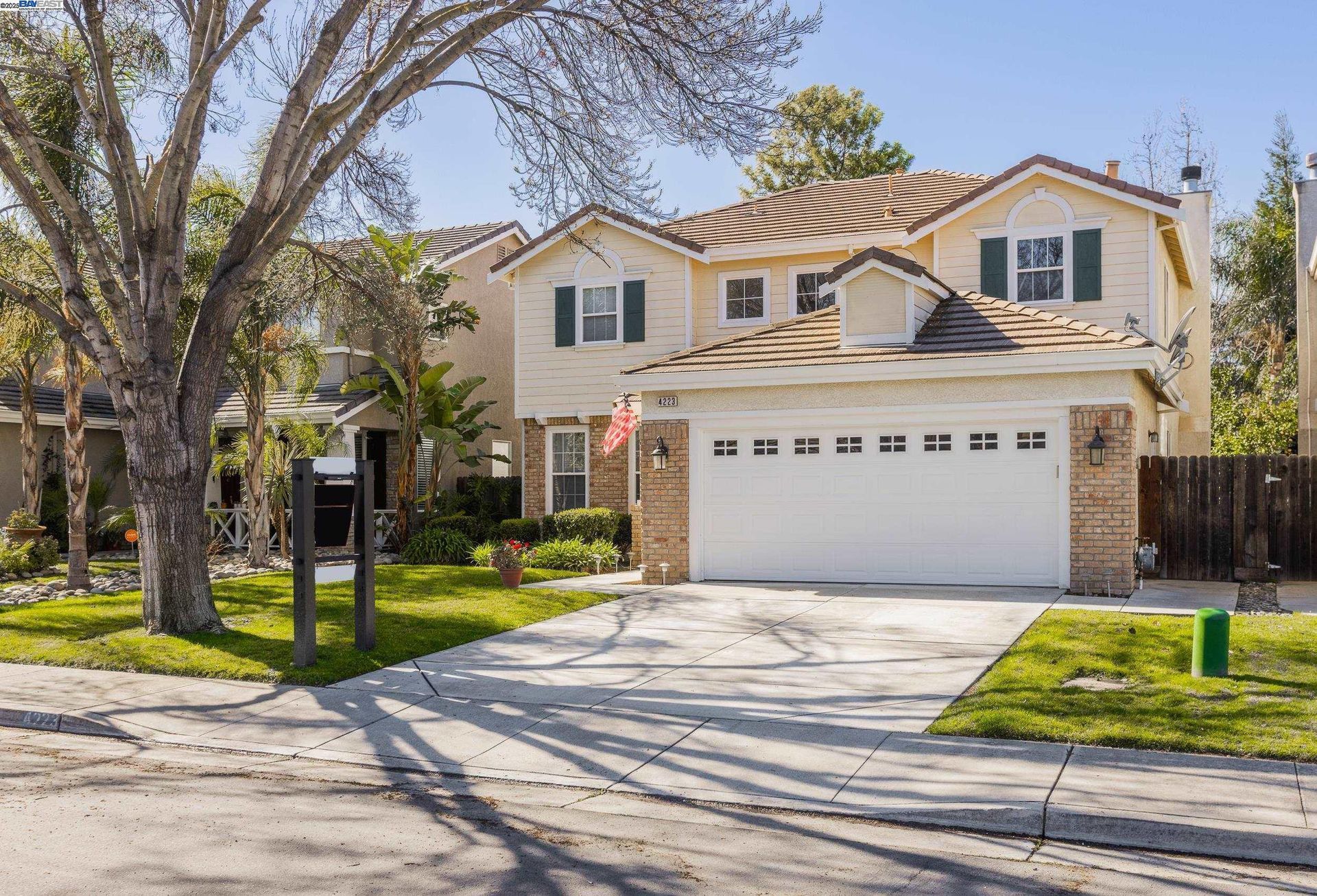By Arvid Abellera
•
April 9, 2025
Great Opportunity to own this Rare Aurora Gardens Townhome!! Lovely townhome, Featuring a spacious & bright living room with breathtaking views of the Monarch Bay Golf Course. Freshly painted and ready for you, The family room is great for gatherings or relaxation, Very spacious master bedroom suite featuring a private bathroom and deck for those fresh air moments. All rooms are generous and don't forget the kitchen, fully equipped ready for use, two car garage too, Good location, Easy access to the Hwy, shopping and restaurants, and a short walk to the Marina and beach, Close to Kaiser Hospital too. What more can you ask for, come take a look!! 📍13479 Aurora Dr, 5, San Leandro, CA 94577 3 beds | 2.5 baths | 1,694 sqft | 0.81 acres lot View Listing 🏡 https://davidazimi.realscout.com/homesearch/listings/149510574 YoouTube Link: https://youtu.be/2qhdMnpf6Eg Website Link: https://www.davidazimigroup.com/13479-aurora-dr-5-san-leandro-ca-94577 Other Properties: - 2254 Reserve Dr., Brentwood, CA YouTube Link: https://youtu.be/MVDmkmqDMME Website Link: https://www.davidazimigroup.com/2254-reserve-dr-brentwood-ca - 236 Elworthy Ranch Dr., Danville, CA YouTube Link: https://youtu.be/UXd5zYB06WM Website Link: http://www.davidazimigroup.com/236-elworthy-ranch-dr-danville-ca - 35882 Rockland Court, Fremont, CA YouTube Link: https://youtu.be/xug-Fm9h590 Website Link: http://www.davidazimigroup.com/35882-rockland-court-fremont-ca-94536 - 17356 Esteban St Hayward, CA 94541 YouTube Link: https://youtu.be/waCKhjcWAt0 Website Link: http://www.davidazimigroup.com/17356-esteban-st-hayward-ca-94541 - 306 Nita Ave Mountain View, CA 94043 YouTube Link: https://youtu.be/u7JGsp8YD3 Website Link: http://www.davidazimigroup.com/306-nita-ave-mountain-view-ca-94043 - 412 Royce Dr San Jose, CA 95133 YouTube Link: https://youtu.be/1rr-Wqi4mJY Website Link: http://www.davidazimigroup.com/412-royce-dr-san-jose-ca-95133 - 1135 DESMOND CT FREMONT, CA 94539 YouTube Link: https://youtu.be/CVg4of2qFb8 Website Link: http://www.davidazimigroup.com/1135-desmond-ct-fremont-ca-94539 - 75 Lansing St, 2 San Francisco, CA 94105 YouTube Link: https://youtu.be/KOWw2M5T_mo Website Link: http://www.davidazimigroup.com/75-lansing-st-2-san-francisco-ca-94105 - 1651 Cunningham St, Santa Clara, CA 95050 YouTube Link: https://youtu.be/3Nxr1mre45E Website Link: http://www.davidazimigroup.com/1651-cunningham-st-santa-clara-ca-95050 - 3080 Rocket Dr, Fremont, CA 94538 YouTube Link: https://youtu.be/acbV1sSBqro Website Link: http://www.davidazimigroup.com/3080-rocket-dr-fremont-ca-94538 - 1540 165th Ave, San Leandro, CA YouTube Link: https://youtu.be/2BRrK7Uzd5I Website Link: http://www.davidazimigroup.com/1540-165th-ave-san-leandro-ca-94578 - 1489 Bridge St, Concord, CA YouTube Link: https://youtu.be/6G6OcbX_0oA Website Link: http://www.davidazimigroup.com/1489-bridge-st-concord-ca-94518 - 209 Sunnyhills Court, Milpitas CA YouTube Link: https://youtu.be/TB60i5G47ns Website Link: http://www.davidazimigroup.com/209-sunnyhills-court-milpitas-ca-95035 - 4025 Moss Rock CT, Modesto, CA YouTube Link: https://youtu.be/x_nLxLqWsso Website Link: http://www.davidazimigroup.com/4025-moss-rock-ct-modesto-ca-95356 - 25129 Pleasant Way, Hayward, CA YouTube Link: https://youtu.be/ZbM1Wct5J-c Website Link: http://www.davidazimigroup.com/25129-pleasant-way-hayward-ca-94544 - 1000 3rd St Unit 1106, San Francisco, CA 94158 YouTube Link: https://youtu.be/OqZMTnfJV6E Website Link: http://www.davidazimigroup.com/1000-3rd-st-unit-1106-san-francisco-ca-94158 - 4181 Observatory Ave, Oakland, CA 94619 YouTube Link: https://youtu.be/Uuh7V44_Lhk Website Link: http://www.davidazimigroup.com/4181-observatory-ave-oakland-ca-94619 - 1758 Curtner Ave, San Jose, CA 95124 YouTube Link: https://youtu.be/bi_kDkg6Zas Website Link: http://www.davidazimigroup.com/1758-curtner-ave-san-jose-ca-95124 - 5763 Jensen Rd, Castro Valley, CA 94552 YouTube Link: https://youtu.be/ARkuCX5Cgdk Website Link: http://www.davidazimigroup.com/5763-jensen-rd-castro-valley-ca-94552 - 2863 S Bascom Ave, 812 Campbell, CA 95008 YouTube Link: https://youtu.be/JvHmrL1elJU Website Link: http://www.davidazimigroup.com/2863-s-bascom-ave-812-campbell-ca-95008 - 2371 Virginia St, 2 Berkeley, CA 94709 YouTube Link: https://youtu.be/-OlkKt05C6g Website Link: http://www.davidazimigroup.com/2371-virginia-st-2-berkeley-ca-94709 - 4089 Crandall Cir, Santa Clara, CA 9505 YouTube Link: https://youtu.be/6d7TGN5--yw Website Link: http://www.davidazimigroup.com/4089-crandall-cir-santa-clara-ca-95054 - 4933 Ivyleaf Springs Rd, San Ramon, CA 94582 YouTube Link: https://youtu.be/zmYZAXL_P7g Website Link: http://www.davidazimigroup.com/4933-ivyleaf-springs-rd-san-ramon-ca-94582 - 3119 Castle Canyon Way, San Jose, CA 95135 YouTube Link: https://youtu.be/KY3fnVx9rO8 Website Link: http://www.davidazimigroup.com/3119-castle-canyon-way-san-jose-ca-95135 - 2018 Wellington Dr, Milpitas, CA 95035 YouTube Link: https://youtu.be/qisJlNqJau4 Website Link: http://www.davidazimigroup.com/2018-wellington-dr-milpitas-ca-95035 - 15585 Via Veneto, Morgan Hill, CA 95037 YouTube Link: https://youtu.be/-JrKQLUS1oI Website Link: http://www.davidazimigroup.com/15585-via-veneto-morgan-hill-ca-95037 - 3572 Levanto Way, Manteca, CA 95337 YouTube Link: https://youtu.be/RFK7h_gHCQE Website Link: http://www.davidazimigroup.com/3572-levanto-way-manteca-ca-95337 - 235 N 3rd St, Campbell, CA 95008 YouTube Link: https://youtu.be/JNK8Zsa73rk Website Link: http://www.davidazimigroup.com/235-n-3rd-st-campbell-ca-95008 - 455 Crescent St, 313Oakland, CA 94610 YouTube Link: https://youtu.be/j8t3ozLO8dI Website Link: http://www.davidazimigroup.com/455-crescent-st-313oakland-ca-94610 - 151 Regency Dr, Clayton, CA 94517 YouTube Link: https://youtu.be/2jp0p9JIA7k Website Link: http://www.davidazimigroup.com/151-regency-dr-clayton-ca-94517 - 55 Hunter Ranch Rd, Napa, CA 94558 YouTube Link: https://youtu.be/l0JZ2kpyUd0 Website Link: http://www.davidazimigroup.com/55-hunter-ranch-rd-napa-ca-94558 - 38555 Overacker Ave, Fremont, CA 94536 YouTube Link: https://youtu.be/V-fMj7aIzG4 Website Link: http://www.davidazimigroup.com/38555-overacker-ave-fremont-ca-94536 - 1310-1340 Homestead Rd, Santa Clara, CA 95050 YouTube Link: https://youtu.be/Hfv0qxYOiAA Website Link: http://www.davidazimigroup.com/1310-1340-homestead-rd-santa-clara-ca-95050 - 518 44Th St, Oakland, CA 94609 YouTube Link: https://youtu.be/uM65b2pCT44 Website Link: http://www.davidazimigroup.com/518-44th-st-oakland-ca-94609 - 534 Montori Ct, Pleasanton, CA 94566 YouTube Link: https://youtu.be/gQFCKgNIqAI Website Link: http://www.davidazimigroup.com/534-montori-ct-pleasanton-ca-94566 - 932 Cherrystone Dr, Los Gatos, CA 95032 YouTube Link: https://www.youtube.com/watch?v=WGrQJOinpkE Website Link: http://www.davidazimigroup.com/932-cherrystone-dr-los-gatos-ca-95032 - 4143 Cheeney St, Santa Clara, CA 95054 YouTube Link: https://youtu.be/8RUYpvV4fM8 Website Link: http://www.davidazimigroup.com/4143-cheeney-st-santa-clara-ca-95054 - 2307 Solace Loop, San Jose, CA 95122 YouTube Link: https://youtu.be/zywiYg6Nz6Y Website Link: http://www.davidazimigroup.com/my-post6f4a84d2 - 1965 Ascot Dr, 6 Moraga, CA 94556 YouTube Link: https://youtu.be/tP17WD8HHm0 Website Link: http://www.davidazimigroup.com/1965-ascot-dr-6-moraga-ca-94556 - 9725 Alcosta Blvd, San Ramon, CA 94583 YouTube Link: https://www.youtube.com/watch?v=j2nibB3D7Vo Website Link: http://www.davidazimigroup.com/9725-alcosta-blvd-san-ramon-ca-94583 - 627 El Centro Rd, El Sobrante, CA 94803 YouTube Link: https://youtube.com/shorts/Kq6DSqaLz24 Website Link: http://www.davidazimigroup.com/627-el-centro-rd-el-sobrante-ca-94803 - 4836 Appian Way, El Sobrante, CA 94803 YouTube Link: https://youtu.be/aWUlCKUpu6s Website Link: http://www.davidazimigroup.com/4836-appian-way-el-sobrante-ca-94803 - 6246 Joaquin Murieta Ave, B Newark, CA 94560 YouTube Link: https://youtu.be/crCgLZcvMig Website Link: http://www.davidazimigroup.com/6246-joaquin-murieta-ave-b-newark-ca-94560 - 1450 Mount Shasta Ave, Milpitas, CA 95035 YouTube Link: https://youtu.be/MFHUlxxF0pY Website Link: http://www.davidazimigroup.com/1450-mount-shasta-ave-milpitas-ca-95035 - 3231 Carpenter Way, San Ramon, CA 94582 YouTube Link: https://youtu.be/ilfe14EjI94 Website Link: http://www.davidazimigroup.com/3231-carpenter-way-san-ramon-ca-94582 - 16389 Saratoga St, 305E, San Leandro, CA 945 YouTube Link: https://youtu.be/iDNV4irZrnI Website Link: http://www.davidazimigroup.com/16389-saratoga-st-305e-san-leandro-ca-94578 - 1099 Country Club Dr, Lafayette, CA 94549 YouTube Link: https://youtu.be/RZrl9zNLrrc Website Link: http://www.davidazimigroup.com/1099-country-club-dr-lafayette-ca-94549 - 256 Element Rd, San Jose, CA 95110 YouTube Link: https://youtu.be/-R8AdoYtBfQ Website Link: https://www.davidazimigroup.com/256-element-rd-san-jose-ca-95110 - 51 Bay View Dr, San Carlos, CA 94070 YouTube Link: https://youtu.be/ofeLUVHcUzA Website Link: http://www.davidazimigroup.com/51-bay-view-dr-san-carlos-ca-94070 - 4653 Beaumont Ave, Tracy, CA 95377 YouTube Link: https://youtu.be/ZWIGW7y6A00 Website Link: https://www.davidazimigroup.com/4653-beaumont-ave-tracy-ca-95377 - 30 Terraced Hills Way, San Ramon, CA 94583 YouTube Link: https://youtu.be/CNHtoJjk5mc Website Link: https://www.davidazimigroup.com/30-terraced-hills-way-san-ramon-ca-94583 - 1775 Heron Ave, Sunnyvale, CA 94087 YouTube Link: https://youtu.be/_CZcEDGIg_g Website Link: http://www.davidazimigroup.com/1775-heron-ave-sunnyvale-ca-94087 - 39668 Banyan Tree Rd, Fremont, CA 94538 YouTube Link: https://youtu.be/osKCXJvAReE Website Link: http://www.davidazimigroup.com/39668-banyan-tree-rd-fremont-ca-94538 - 4316 Bidwell Dr, Fremont, CA 94538 YouTube Link: https://youtu.be/KtbVP6bNioc Website Link: http://www.davidazimigroup.com/4316-bidwell-dr-fremont-ca-94538 - 42011 Meredith Dr, Fremont, CA 94539 YouTube Link: https://youtu.be/KXsmvHlOWIw Website Link: https://www.davidazimigroup.com/42011-meredith-dr-fremont-ca-94539 - 3367 Esperanza Dr, Concord, CA 94519 YouTube Link: https://youtu.be/lUuP3eF3IUQ Website Link: https://www.davidazimigroup.com/3367-esperanza-dr-concord-ca-94519 - 257 Arlington Rd, 203, Redwood City, CA 94062 YouTube Link: https://youtu.be/BHPFFvvDehM Website Link: http://www.davidazimigroup.com/257-arlington-rd-203-redwood-city-ca-94062 - 1683 Marina Way, Brentwood, CA 94513 YouTube Link: https://youtu.be/6_EXo26c3Z0 Website Link: https://www.davidazimigroup.com/1683-marina-way-brentwood-ca-94513 - 38321 Timpanogas Cir, Fremont, CA 94536 YouTube Link: https://youtu.be/952aqbnXyWM Website Link: http://www.davidazimigroup.com/38321-timpanogas-cir-fremont-ca-94536 - 537 Morningstar Way, Vacaville, CA 95687 YouTube Link: https://youtu.be/aCJn-BZLBRs Website Link: http://www.davidazimigroup.com/537-morningstar-way-vacaville-ca-95687 - 1036 Bret Hill Ct, San Jose, CA 95120 YouTube Link: https://youtu.be/9rokUNO6fxA Website Link: http://www.davidazimigroup.com/1036-bret-hill-ct-san-jose-ca-95120 - 2 Windmill Ct, San Ramon, CA 94583 YouTube Link: https://youtu.be/7bNEWlzGNm0 Website Link: http://www.davidazimigroup.com/2-windmill-ct-san-ramon-ca-94583 - 5373 San Simeon Pl, Castro Valley, CA 94552 YouTube Link: https://youtu.be/J_TtgxkMaWw Website Link: http://www.davidazimigroup.com/5373-san-simeon-pl-castro-valley-ca-94552 - 16431 Saratoga St, 206w, San Leandro, CA 94578 YouTube Link: https://youtu.be/Q8WSa9H5vo0 Website Link: http://www.davidazimigroup.com/16431-saratoga-st-206w-san-leandro-ca-94578 - 1314 4th St, Berkeley, CA 94710 YouTube Link: https://youtu.be/jkmmI-zqHUo Website Link: https://sites.liftoffagent.com/home/site/c3bc8d29/blog/1314-4th-st-berkeley-ca-94710 - 817 Horcajo St, Milpitas, CA 95035 YouTube Link: https://youtu.be/2mmeny5DTzM Website Link: http://www.davidazimigroup.com/817-horcajo-st-milpitas-ca-95035 - 373 Taurus Ave, Oakland, CA 94611 YouTube Link: https://youtu.be/QBcbwc3NtCA Website Link: http://www.davidazimigroup.com/373-taurus-ave-oakland-ca-94611 - 35267 Farnham Dr, Newark, CA 94560⠀ YouTube Link: https://youtu.be/FRwr98uLrWU Website Link: http://www.davidazimigroup.com/35267-farnham-dr-newark-ca-94560 - 676-680 Colorado Ave, Palo Alto, CA 94306 YouTube Link: https://youtu.be/f0fWkJj3oCU Website Link: http://www.davidazimigroup.com/676-680-colorado-ave-palo-alto-ca-94306 - 965 Ascot Dr, 6, Moraga, CA 94556⠀ YouTube Link: https://youtu.be/kECwQ524HYM Website Link: http://www.davidazimigroup.com/my-poste8edd823 - 2912 Rugby Ct, Tracy, CA 95377⠀ YouTube Link: https://youtu.be/SdInLk26hVQ Website Link: https://www.davidazimigroup.com/2912-rugby-ct-tracy-ca-95377 - 1507 48Th Ave, Oakland, CA 94601⠀ YouTube Link: https://youtu.be/zbyJsAW9zZ0 Website Link: https://www.davidazimigroup.com/1507-48th-ave-oakland-ca-94601 - 2906 Morgan Dr, San Ramon, CA 94583 YouTube Link: https://youtu.be/qG69shRLaOg Website Link: https://www.davidazimigroup.com/2906-morgan-dr-san-ramon-ca-94583 - 4223 Lindsey Ln, Tracy, CA 95377 YouTube Link: https://youtu.be/2EhacnfUv9E Website Link: https://www.davidazimigroup.com/4223-lindsey-ln-tracy-ca-95377 - 185 Christopher Michael Ln, Tracy, CA 95377 YouTube Link: https://youtu.be/US5LmdzcFEk Website Link: https://www.davidazimigroup.com/185-christopher-michael-ln-tracy-ca-95377 INTERO Real Estate | It takes: Discipline, Routine, Education, Action, Mentality to turn DREAMS into reality. David Azimi | Realtor® CA DRE# 01790940 📲 510.386.4844 📧 info@davidazimigroup.com 🌐 www.davidazimigroup.com Looking to Buy Your First Home? ⭐ https://www.davidazimigroup.com/first-time-home-buyer Set Up Property Alerts ⭐ https://www.davidazimigroup.com/setup-property-alerts #TheDavidAzimiGroup #Intero #TopAgent #EastBay #SiliconValley #RealEstateExpert #San Leandro #LivingInSan Leandro














